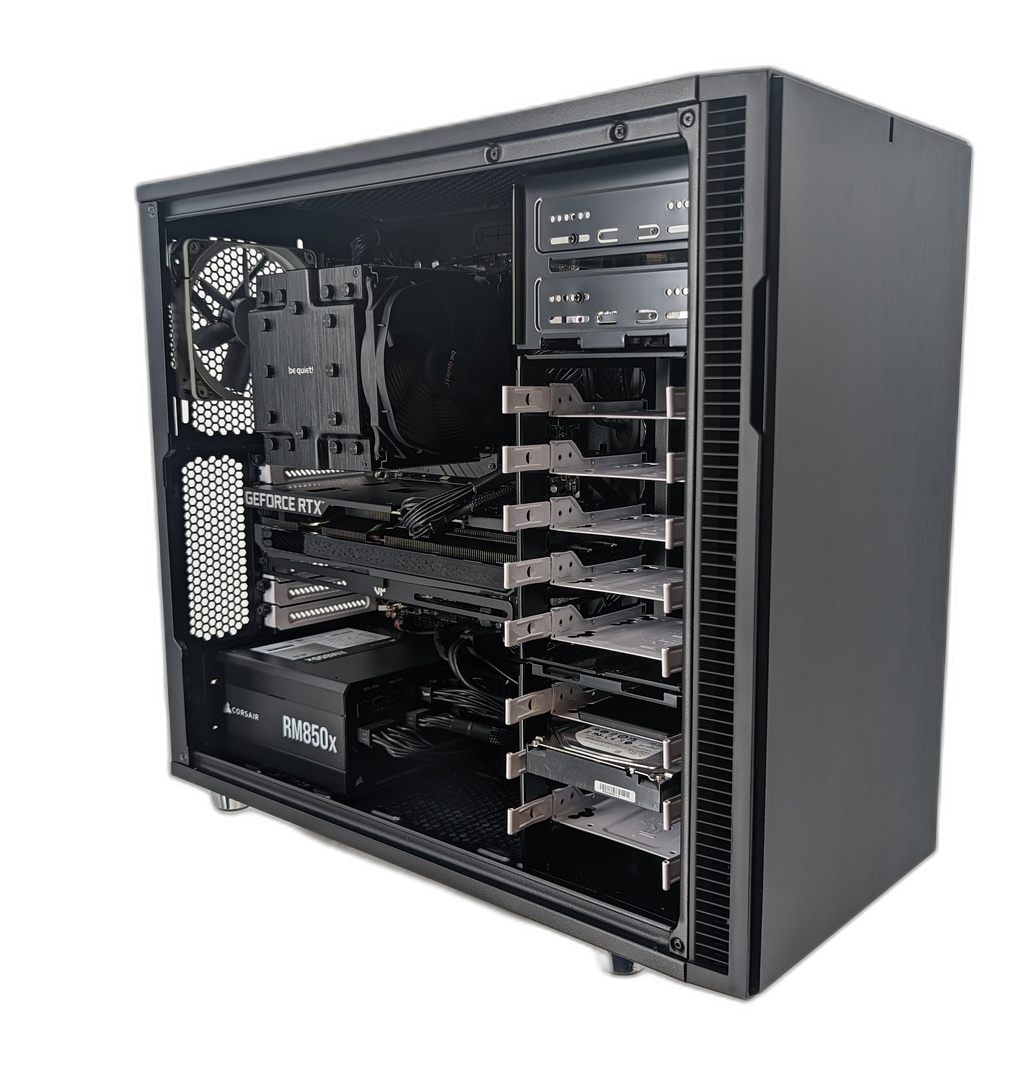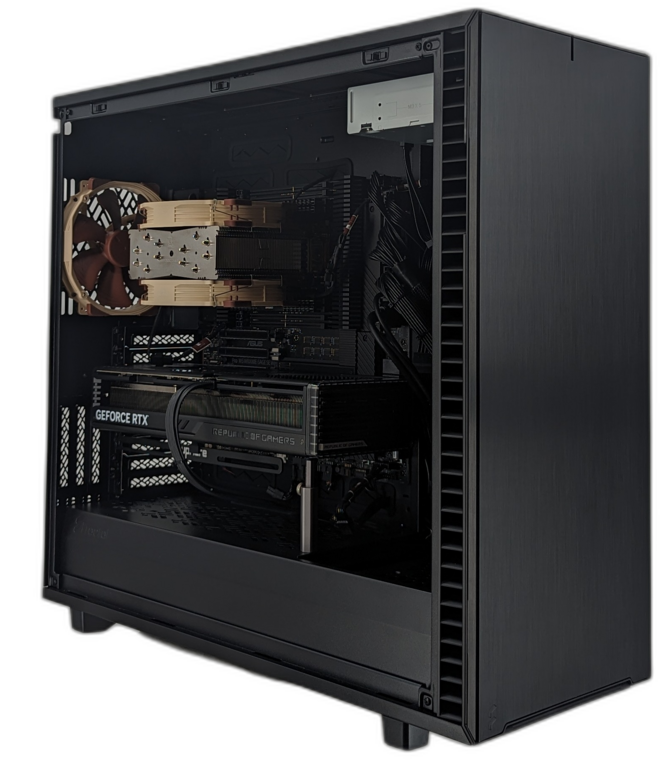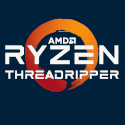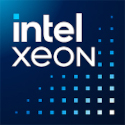Warning: Technology changes very quickly so it is always recommended that you look at the date when the article was last updated. If you have any questions feel free to contact us.
Article Date: 02-25-2023
Recommended Hard Drive Configurations
How customers choose to setup their individual PC's hard drives is largely dependent on the customer's needs and budget. There are some general concepts about hard drives that you should keep in mind, however, when choosing your hard drive setup.
NVMe 4.0 For OS & Program Files | SATA3 SSDs and Hard Disks For Data Files
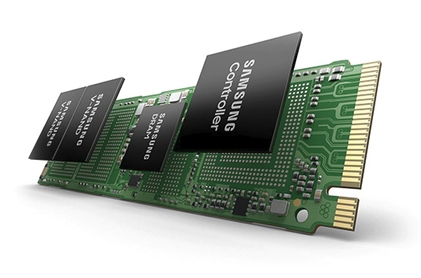
Lightning fast NVMe PCIe 4.0 M.2 Drives are the way to go for putting your OS and Program Files onto. They have come down in price substantially in the last few years. Still they are about one and a half or two times as expensive as SATA3 SSDs, and about ten times as expensive for the same size of SATA3 spinning hard disk. For your second or third hard drive, you may still opt to choose to purchase a SATA3 SSD (no noise) or a SATA3 spinning hard disk drive (they come in large capacities and are relatively cheap). What most customers will do now is choose a 500GB NVMe PCIe 4.0 M.2 as their boot disk and to run their programs on, then they will purchase a absolutely silent M.2 drive or SATA3 SSD or a large hard disk drive for their data files.
How Much Space Do You Need For A Program Start-Up Hard Drive?
How much space you need for Program Files is a difficult question to answer. This is because:
- Not all programs disclose exactly how much space they take up
- Certain programs grow depending on set-up, temporary files, etc.
- Most programs need a little extra space during installation than the actual size of their program files
But, the following are some generalized ideas regarding how much space various programs take up:
- Windows takes between about 25-60 GB space depending on set-up
- Photoshop operates best with up to 20 GB disk space (other Adobe CC programs will take more)
- CorelDRAW Graphics Suite requires 5.5 GB disk space
- Quickbooks needs 2.5 GB disk space for optimal performance
- Microsoft Office 64-bit needs about 16 GB space
- CAD programs tend to need about 7 GB space
- Video Editing programs need about 8 GB space
- Digital Audio Editing programs often need up to 16GB space
- Browsers can use up to 80 GB and more space depending on cache
- Other common programs usually need less than 1 GB a piece
128GB would be sufficient space for program files for most common uses, but we always recommend having an extra margin of space for installation requirements and any additional needs that come up in the future. A 500GB SSD would makes an ample program file Startup Disk for almost anyone's needs. You can then put all your other files on a secondary M.2, SATA3 SSD, or Disk Drive. Placing your program files on an SSD will make Windows start times and Program start times lightning fast.
One Large SSD
Of course, if you can afford to purchase a large M.2 or SSD drive (say 2TB or more), you can put all your files on one drive. Or, some people have other means of storing their data and media files such as external hard drives or cloud storage solutions. These solutions have their own downsides such as cost, lack of portability, and/or dependence on sometimes unstable and slow internet connections.
One Smaller SSD
Also, if you really don't keep much in the way of media files (songs, photos, and videos), and don't run a ton of different types of programs, you may find that a smaller sized SSD drive will be plenty of space for you. You can go ahead and use a 500GB M.2 drive typically defaulted in most of our systems, and you might not find that you need any more space than that on your hard drive. A small to medium M.2 Drive might, indeed, be an ideal data size for a computer used in the public service sector, where speed is desirable, but lots of room for all sorts of files is unnecessary, even unwanted.
Spinning Hard Disk Drive
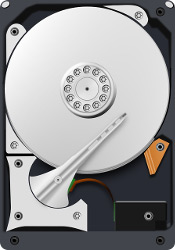
On the other hand, except during start up, spinning hard disks are still decently speedy. Your hard drive speed will typically not be an issue with system performance (unless you are doing intensive work). You can get a better bargain in your PC configuration by choosing a larger spinning hard disk drive as your secondary drive (for instance a 4 to 20 TB Seagate IronWolf).
No matter your choice, file space can quickly get out of hand with today's media files, and is frequently overlooked. When selecting your PC, it is important to think about current and future needs. How much hard drive space will you need?
How Much Space Do My Files Take?
How much space files take up is even harder to estimate, than to estimate the space requirements for program files. Document sizes, pdf files, movie sizes, photo sizes, audio file sizes, all vary widely depending on length, size, format, and what is included inside of them.
The following are some general ideas regarding how much space various programs take up:
Common Hard Drive Space Needs
- 14 Gb 1 hour MP4 (4K) video
- 4 Gb 100 Professional RAW images
- 3 Gb 1 hour MPEG-2 video
- 2 Gb 400 3000x2000 px JPG files
- 2 Gb 100-1000 typical PDF Documents
- 2 Gb 5000 3-4 minute mp3 Songs
- 2 Gb 1000 to 200,000 typical Excel documents
- 2 Gb 8000 to 200,000 typical Word documents (without images)
- 1.5 Gb Maximum Quickbooks Enterprise Company File
*Raw video footage can take upwards of 700 GB hard drive space for one hour's worth of footage. See this handy video size calculator to help determine your hard drive needs.
Total Hard Drive Space Needed
You can see that between the need for 128 GB of space just for Windows and other Programs, plus the space requirements of the document and media files listed above, that you can easily run out of room in a 512GB hard drive. This is especially true if you tend to save many Photos, PDFs, or Videos on your PC. You should plan accordingly when selecting your custom PC configuration.
Always Make Sure You Overplan
All hard drives, whether spinning hard disks or solid state drive (SSD), work more efficiently if they have ample space left on them. Anytime your hard drive is mostly full (say 80% or more), your hard drive speed will slow down substantially. Keep this extra space requirement in mind when choosing your hard drive. A 128GB hard drive is really only about a 100GB hard drive, a 256GB is really only about 200GB, a 1TB is really only about 820GB, in terms of useful space.
Scratch Disks
If you run Photoshop or Video software, it is also recommended that you get a Scratch Disk or Cache Disk in order to speed up your PC when working with large, layer intensive files. An appropriate Scratch Disk for Photoshop might be 500GB hard drive - if you want to keep open up to 30 RAW Images at one time. Professional video editing programs should also be set up to use Scratch Disk (Cache Disk) and should have a scratch disk of around 1TB-2TB, depending on how much video you work with, and whether it is 4K or 8K.
